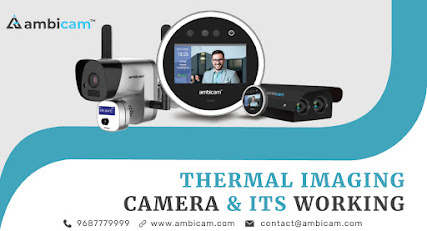Thermal imaging camera and it's working
A Thermal Imaging Camera can capture and create an image of a particular object by using infrared radiation emitted from the object's surface in a process that is called thermal imaging or thermal screening. The created image represents the temperature of the respective object or individual. The underlying technology of the thermal imaging cameras was first developed for the use of the military. However, the invention of the thermal imaging camera is related to the history of thermography which began in the year 1960 by Sir William Herschel an astronaut who also discovered infrared light.
Both infrared radiation and visible light are an important part of the electromagnetic spectrum, but unlike visible light, Infrared radiation cannot be perceived with naked human eyes directly. This gives a major explanation that why a thermal camera system is not affected by the light to a greater extent and can provide us with a clear picture and temperature of an object or individual even in pitch dark environments. The thermal imaging process is all about converting the infrared light emitted by the surface of objects into electric signals and creating an image using that information. This technology was revolutionary at older times, but it is in common use today and developing more with the help of advanced technologies. But the question arises that how do these devices manage to capture this invisible visual information from surfaces.
Working of thermal imaging systems-
An infrared (IR) or thermal imaging camera works by detection and measurement of the infrared radiation emanated from objects or certain individuals, in other words, their heat signature is being measured by the thermal imaging process. To do the process, firstly the camera must be fitted well with a lens that allows the emanated IR frequencies to pass through the surface of an object, focusing them directly onto a special sensor array which can, in turn, detect and read the signature.
The sensor array is being made as a grid of pixels, each of which reacts to the emitted infrared wavelengths hitting it by conversion of them into an electronic signal. Those signals are then transmitted over to a processor within the main body of the respective camera, which converts them into a colour map of different temperature ranges using algorithms. It’s this map that is then further sent over to be rendered by the display screen.
Certain ranges of thermal imaging cameras also include a standard shooting mode that works only with the visible light spectrum, much like any other advanced digital security camera. This allows for comparison with great ease of two identical shots, one taken in IR mode and another one in normal mode, to help quickly identify and justify specific problem areas once the consumer steps out from behind the lens.

Comments
Post a Comment